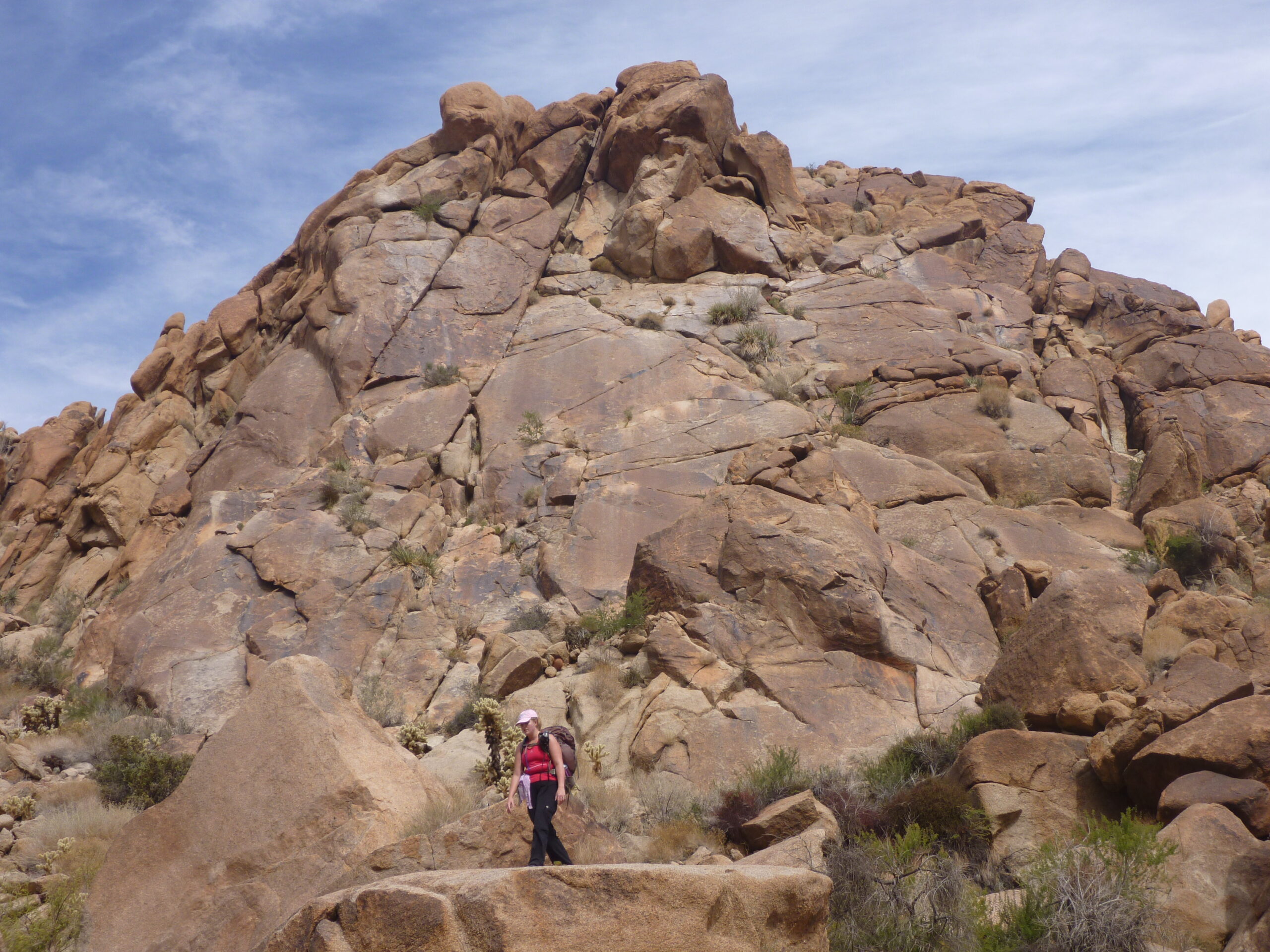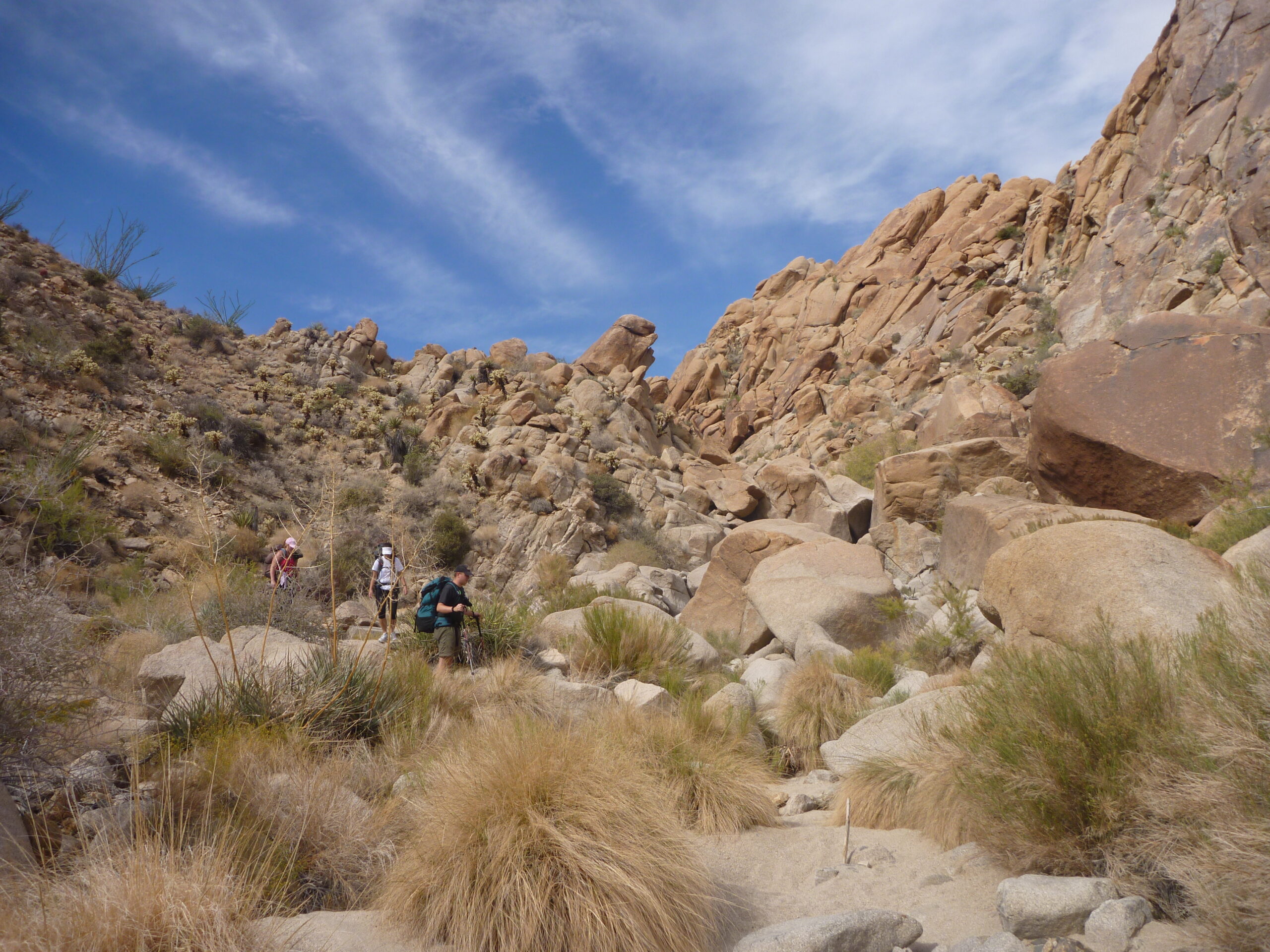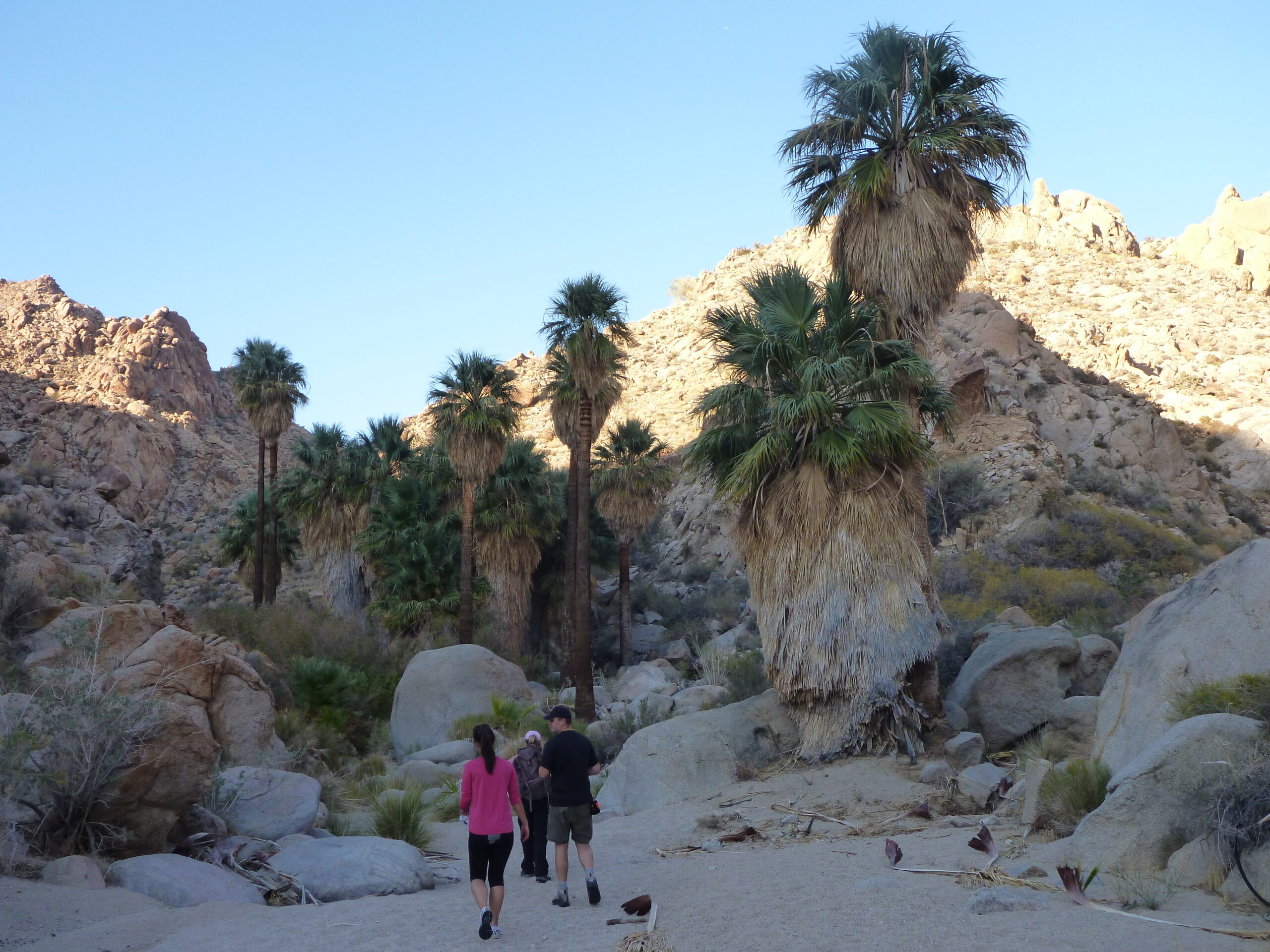DECEMBER 8, 2010 — I think Joshua Tree National Park has been trying to teach me a lesson for a long time now — but it has been hard figuring out what it is. I initially visited Joshua Tree for my first ever self-planned backpacking trip, when my then-girlfriend and I forgot to bring matches necessary to light a stove necessary to cook our dinners. We had planned to hike the distance of the 35-mile California Riding and Hiking Trail over three days, but instead, our planning failure forced us to turn around on our second morning.
The second time I visited the Park, my friends Justin, Laura, Krista and I ventured into the Park’s remote eastern wilderness and found ourselves bouldering in the Coxcomb Mountains. We planned to hike to the top of 4,416-foot Aqua Peak, but in the middle of the mountain range, we found ourselves surrounded by tens of identical-looking spires. Without a GPS, our topo map and compass weren’t enough to identify our target Peak. Again, I left the park, having failed my mission.

Wendy climbs down rocks toward Victory Palms.
Last month, with three years of buffer to cushion the sting of my Aqua Peak failure, I decide that it’s finally time to beat Joshua Tree. I devise a plan to visit each of the Park’s eight desert oases: Mara, 49 Palms, Cottonwood Spring, Lost Palms, Victory Palms, Summit Spring, Munsen, and a final, mysterious and nameless oasis near Munsen. Not the types to turn down a weekend backpacking trip, my friends Rich and Wendy sign on for the adventure, and I also manage to convince my friend Elizabeth, a backpacking first timer, to join us.
Our two-day trip plan is ambitious, considering that this is Elizabeth’s first time hiking with a 25-pound bag, and her work schedule will limit our hiking time. Nevertheless, we leave for Joshua Tree early on a Saturday morning and drive for about three hours, through the Park’s south entrance, to the Cottonwood Spring trailhead. We know that the first two oases, Mara and 49 Palms, are accessible by car on the northern edge of the park (after very short hikes), so we check them off our list, knowing them we’ll visit them on the way home after our hike. There’s almost no water in the Park, so each of us pack about six liters of water into our backpacks. (Humorously, I discover later that I’m short a few liters because some wine I packed as a treat for the group masked the weight discrepancy. No one complained.) In an auspicious start to our excursion, we discover the third oasis, beautiful Cottonwood Spring, minutes from the trailhead. Three down, seven to go!

Hikers make their way across a ridge in Joshua Tree.
“Don’t fall into any cacti,” Wendy says to me, teasing me about a previous hiking incident in Arizona in which she spent 30 minutes pulling spines out of my hand and thigh after I tripped and fell directly into a cactus.
“Not this time,” I assure her.
We make our way deep into the desert, passing sharp banana yuccas, pipe cleaner-like green ocotillos, and fluorescent red ferocacti.
“I feel like I’m in a weird, huge aquarium,” Elizabeth notes. I realize that, apart from the lack of water, she’s exactly right.
After about three and a half miles, we reach breezy, peaceful Lost Palm Oasis (number four) at the trail’s end. We relax below the trees, and the soothing sound of the fan palms rustling in the wind almost keeps us from going any further. But I am determined to conquer Joshua Tree and complete our mission to see all eight oases. We continue on, into the dry, sandy backcountry. After some strenuous bouldering, climbing down a steep pass and snaking over and under rocks as big as trucks, we reach Victory Palms (number five). The two-tree oasis gives us a place to take a break and eat lunch. As we eat, Rich expresses his disappoint with the fifth oasis.

Hikers approach Summit Spring in Joshua Tree’s Munsen Canyon.
“I don’t know. I don’t think this is where the magic is,” Rich complains. “If these palm trees had been crossed in a V-formation, maybe — but, this?” Rich reveals to us a secret desire to see an oasis matching California-based burger chain In-N-Out’s logo, but he acknowledges that this is probably beyond anything we could hope for from Joshua Tree.
After leaving Victory Palms, we’re racing against diminishing daylight as we continue climbing over boulders up rugged Munsen Canyon, hoping to catch a glimpse of Joshua Tree’s most remote, difficult-to-find oases. When beautiful Summit Spring, a large group of fan palms tucked deep in the rocky, bronzed canyon, comes into view, we rush toward it, thrilled with our progress. After all, we’ve reached oasis number six and only two remain!
Unfortunately, we’ve reached a fork in the Canyon, and our maps and GPS don’t have any additional information to help us. With less than an hour before sunset, I arbitrarily choose the left side of the canyon and hurry my way up, hoping to see Munsen Oasis. Rich, Wendy, and Elizabeth let me go ahead to scope out the terrain — but after an additional half hour of bouldering, I don’t see any more oases. The sun is beginning to set. I am desperate to continue, knowing that the following day we only have time to hike back to the trailhead, but we’re out of daylight. Disappointed, I rejoin the others and we hike out of Munsen Canyon to make dinner at our campsite.

Hikers traverse boulders near Victory Palms Oasis.
In the dark, the four of us lie in the cool sand, drinking wine and watching shooting meteors among the seemingly infinite number of stars above. I realize that every Joshua Tree failure I’ve had always seems to punctuate itself with a meditative moment like this under the expansive desert sky.
The next day, we hike back to our car without having found the final two oases in Munsen Canyon. On the way, I trip and somehow manage to impale my leg with the razor-sharp spines of a cholla cactus.
“Again?!” Wendy says in disbelief, still teasing me.
When I pull the spines out of my leg with a gloved hand, they slice through the glove and imbed themselves deeply in my fingers. I curse Joshua Tree as I rip the cactus out of my flesh, and my leg and hand start bleeding. Joshua Tree has won again, I think.
In Touching My Father’s Soul, Jamling Tenzig Norgay — the son of famed Everest Sherpa Tenzig Norgay –writes, “My father knew before he ever set foot on the mountain that it had to be approached with respect and with love, the way a child climbs into the lap of its mother. Anyone who attacks the peak with aggression, like a soldier doing battle, will lose. Thus there is but one appropriate response upon reaching the summit of Miyolangsangma’s [the Tibetan goddess who lives at the top of Everest] mountain: to express gratitude.”
Certainly, Joshua Tree is no Mount Everest. But despite all of my failures in the Park, it always manages to remind me of its beauty during those nights under the desert sky. Maybe it’s time for me to stop trying to conquer Joshua Tree. Maybe it’s time for me simply to appreciate it.
How to See Joshua Tree’s Eight Desert Oases
OVERVIEW: Joshua Tree National Park hides eight desert oases: Mara, 49 Palms, Cottonwood Spring, Lost Palms, Victory Palms, Summit Spring, Munsen, and a final, mysterious and nameless oasis near Munsen. The first four are easy to visit, but the last four require a long hike with some strenuous bouldering and some navigation skills.
LOGISTICS: The southern entrance to Joshua Tree is a three-hour drive from Los Angeles, east on I-10, and the Cottonwood Spring Trailhead is a 10-minute drive from that entrance. You can easily find Cottonwood Spring and Lost Palms simply by following Cottonwood Trail for about 3.5 miles from the parking area. Then, for an overnight trip, continue by following the old, rusty pipeline into the desert beyond Lost Palms to see Victory Palms, Summit Spring, and Munsen Spring. Summit and Munsen are high in Munsen Canyon, which can be found by taking a left into the canyon after a flat stretch of sand following Victory Palms. After Summit Spring, follow the left fork for over a mile to find Munsen Spring. After returning to your car, drive north on the paved Park road. The Oasis of Mara stands adjacent to the northern entrance’s Visitor Center, and 49 Palms Oasis can be found via a three-mile round-trip hike from a trailhead at the end of Fortynine Palms Canyon Road. (Drive south from the High Desert Animal Hospital on Twentynine Palms Highway onto Canyon Rd.)
ROUTE: View the route below or download the Without Baggage Munsen Canyon GPS track in GPX or KML format.
I've discovered that the best way to remove a cholla ball is to take a flat rock in each hand and "scoop" the cholla ball off in one quick motion. Then, you can pick the remaining spines out with your bare hand.
Mark, this is a really useful tip. I will commit it to memory now, but I hope I never have to use it!
Found this when looking for photos of a desert oasis in JT or nearby, remembered from my childhood living in Eagle Mountain. Then, the oasis was heavily shaded (some mottled sunlight but mostly shaded) with lush palms and pollywogs swam in the pond. This was sometime between 67 and 69 probably. I'm thinking it may have dried up. Any clues for me?
Andrea: Was it Lost Palms Oasis?